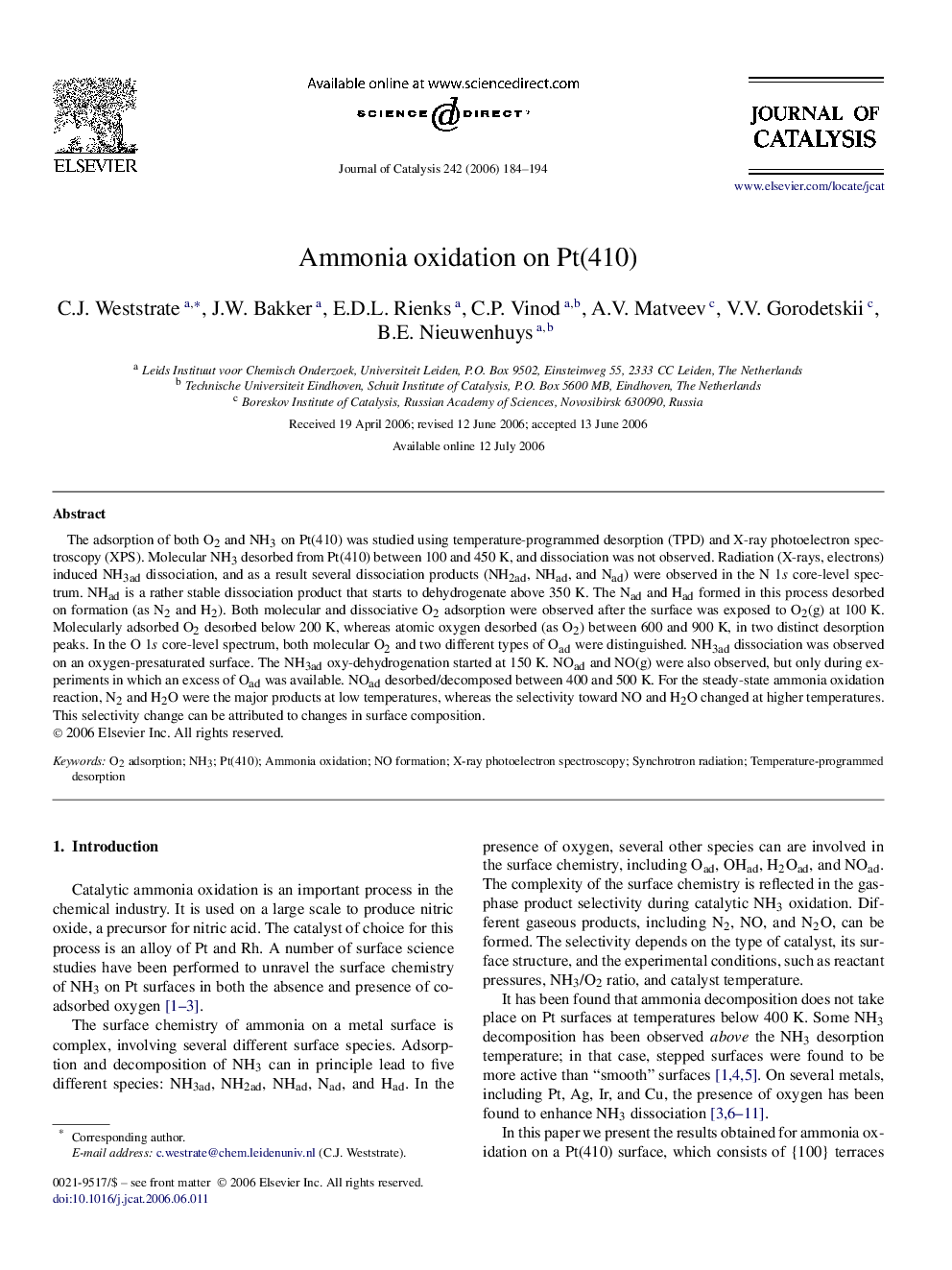| Article ID | Journal | Published Year | Pages | File Type |
|---|---|---|---|---|
| 63473 | Journal of Catalysis | 2006 | 11 Pages |
The adsorption of both O2 and NH3 on Pt(410) was studied using temperature-programmed desorption (TPD) and X-ray photoelectron spectroscopy (XPS). Molecular NH3 desorbed from Pt(410) between 100 and 450 K, and dissociation was not observed. Radiation (X-rays, electrons) induced NH3ad dissociation, and as a result several dissociation products (NH2ad, NHad, and Nad) were observed in the N 1s core-level spectrum. NHad is a rather stable dissociation product that starts to dehydrogenate above 350 K. The Nad and Had formed in this process desorbed on formation (as N2 and H2). Both molecular and dissociative O2 adsorption were observed after the surface was exposed to O2(g) at 100 K. Molecularly adsorbed O2 desorbed below 200 K, whereas atomic oxygen desorbed (as O2) between 600 and 900 K, in two distinct desorption peaks. In the O 1s core-level spectrum, both molecular O2 and two different types of Oad were distinguished. NH3ad dissociation was observed on an oxygen-presaturated surface. The NH3ad oxy-dehydrogenation started at 150 K. NOad and NO(g) were also observed, but only during experiments in which an excess of Oad was available. NOad desorbed/decomposed between 400 and 500 K. For the steady-state ammonia oxidation reaction, N2 and H2O were the major products at low temperatures, whereas the selectivity toward NO and H2O changed at higher temperatures. This selectivity change can be attributed to changes in surface composition.
